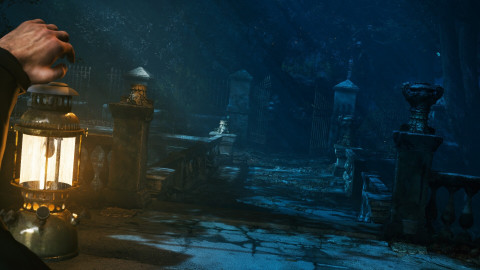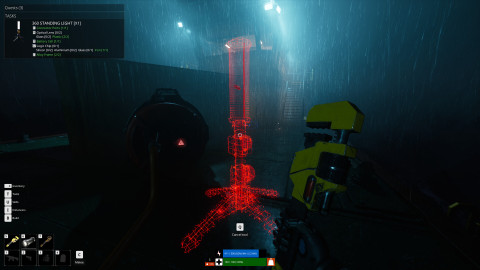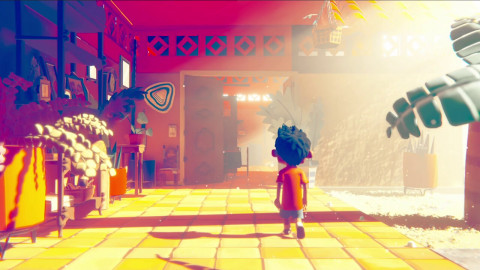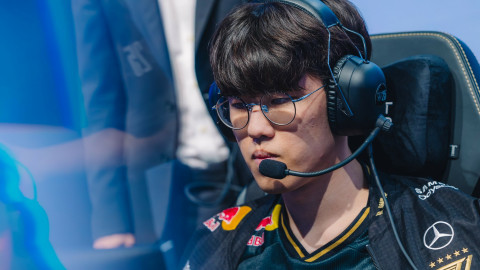
Frame Arms Girl: Dream Stadium is a hack-and-slash, rogue-lite action RPG developed by Loadcomplete and serviced by LINE NEXT. Both the developer and publisher are quite well-known among Web2 gamers.
Loadcomplete is a South Korean developer that gained significant recognition overseas with titles like Crusader Quest and Legend of Slime. LINE NEXT, on the other hand, is a Line Corporation subsidiary focused on blockchain services with the NFT platform, DOSI.
Frame Arms Girl: Dream Stadium holds considerable significance for both companies. For Loadcomplete, it marks their first full 3D action game and foray into blockchain gaming, while LINE NEXT launches its first game on the Web3 gaming platform, "GAME DOSI," signaling a substantial push towards establishing their service.
The initial impression of FAMG is exceptionally clean. Rather than forcibly integrating blockchain elements, it demonstrates a well-rounded foundation as a game. Overall, it exudes a sense of gamification. Let's explore the various aspects of Frame Arms Girl: Dream Stadium that contribute to this impression.
A Well-Rounded Completion Comparable to Web2 Games
Enjoyable Action Gameplay

Frame Arms Girl: Dream Stadium is based on the original plastic model series "Frame Arms Girl" by renowned Japanese hobby maker Kotobukiya. The game features characters in the form of moe-fied robots, and players become their masters, training them to become top-notch robots.
Upon initial access, the game starts with a simple tutorial, presenting a streamlined progression. From graphics to user interface and controls, everything appears well-polished. Although it may fall slightly short compared to the latest PC games, considering the game's concept and genre, it seems like the most appropriate presentation. Particularly, even without the "Web3" label, Frame Arms Girl: Dream Stadium has significant strengths that do not leave players wanting.
The gameplay follows the typical rogue-lite style. Players choose characters and maps, and then progress through battles and events by selecting tiles. At the end of each tile, a boss monster awaits, and defeating the Act 3 boss allows players to record their scores on the ranking board. The PvP system involves competing through score rankings rather than direct confrontation.

The quarter-view gameplay reminds players of games like "Hades" and "The Binding of Isaac." The battles flow with a brisk pace. Each map features different monsters with unique attack patterns, requiring players to strategize while playing. Mindlessly mashing the attack button will quickly deplete your character's health. The action-packed combat provided a satisfying feeling of skillful control, which is crucial in an action game.
Boss fights, in particular, showcased flashy attack patterns and widespread attacks, providing more excitement than regular battles. The final boss in Act 3 isn’t against a massive and brutish mechanical monster — you fight with another Frame Arms Girl. The battle is divided into two phases, presenting unexpected challenges for players, even when they were seemingly in an advantageous position.
However, the rogue-like genre's characteristics left something to be desired. One significant aspect of rogue-like games is their ability to dilute the repetition that arises from playing the same content repeatedly — usually through stage structure, equipment, or items.
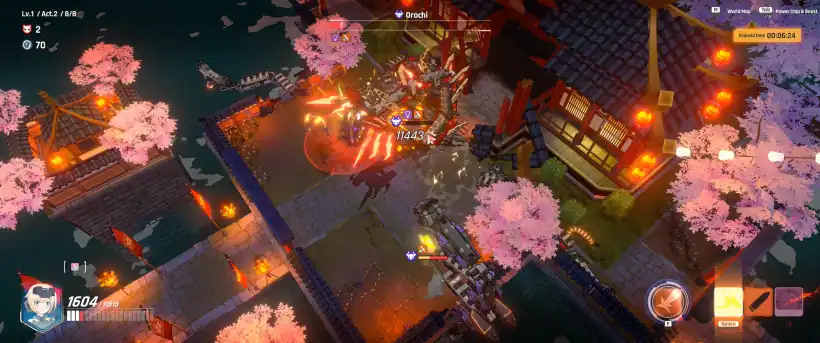

In FAMG, random growth elements include elemental parts such as fire, ice, electricity, and darkness, as well as parts that significantly alter the attack style. For instance, certain elements may engulf enemies in flames on impact or summon lightning during special attacks, or even change regular attacks from single shots to three-round bursts. Depending on the combination of parts, there can be substantial performance variations.
While there is a considerable variety in the types and numbers of parts, quite a few parts either offer similar effects or have negligible performance, making them less practical choices. Especially as the stage level rises, the enemies become incredibly powerful, leaving players with no option but to find parts with proven performance if they want to survive. The game includes items that compensate for this randomness, allowing players to reroll tiles using a roulette-like mechanic, effectively providing some control over the outcome of their growth route.
Since the game is focused on ranking, providing a degree of control to players regarding the randomness seems like a reasonable choice in the long run. It's important to reduce the players' stress, considering that each battle consumes stamina. However, to maintain the enjoyment of repeated play and preserve the uniqueness of the rogue-like genre, it might be beneficial to introduce more parts or make distinctions between abilities to enhance build diversity.

A Prime Example of a Healthy Web3 Game
Ensuring User's Blood, Sweat, and Tears with NFTs
Playing Frame Arms Girl: Dream Stadium might not immediately reveal how it differs from Web2 games in specific terms. This is due to the absence of common Web3 elements like mining and staking.
Currently, Frame Arms Girl: Dream Stadium's Web3 features revolve around NFT-izing items such as characters, skins, supporter cards, and E-units for trading. The game offers ten characters based on the Frame Arms Girl series, and players can choose them for battles. Skins, which come in up to four variations per character, offer stat boosts when equipped.
Supporter cards function as equipment, and players can equip up to four cards before battles. Each card provides various effects, such as stat boosts, increased attack power when low on health, or increased damage against melee enemies, allowing players to customize their setups to tailor their preferred combat styles.

E-units are also like equipment, but instead of providing extra effects, they only provide pure stat boosts. However, equipping the same type E-units has an extra set effect that grants additional stats.
With the exception of skins, all other items can be naturally obtained through gameplay and gacha mechanics, meaning that players can enjoy the game fully without having to engage in Web3 features if they do not feel the need for character skins.
This is an unusual aspect compared to the prevalent P2E nature of Web3 games. Usually, players are required to invest in NFT mining rigs or purchase specific passes to access certain game content. Players mostly had to invest first to lay the groundwork, and then mine tokens and earn money.

Frame Arms Girl: Dream Stadium, on the other hand, is a Web2-based game that incorporates NFT item trading. It allows users to prove ownership of in-game items through NFTs and, if desired, trade them for profit. This approach officially supports in-game item trading using NFTs, which brings the advantage of transaction transparency for both parties.
If third-party companies are involved in dealing items, there may be a lack of transparency in the transaction. On the contrary, when trading with NFTs, both sides can enjoy the advantage of guaranteed transparency in the transaction. Additionally, it enables the trading of items that wouldn’t have been tradable, thus ensuring the user's ownership over a broader range of items.
Therefore, for those approaching Frame Arms Girl: Dream Stadium expecting a P2E game, the absence of earning elements might be somewhat disappointing. However, for those who appreciate Web3's primary advantage of ensuring players' ownership, Frame Arms Girl: Dream Stadium is genuinely a commendable Web3 game. Although playing the game requires a more complex registration process than regular memberships, the game's entertainment value makes it worth a try. If you wish to experience Web3 purely through gameplay without relying on mining and token-based earnings, I encourage you to give it a shot.

Sort by:
Comments :0



